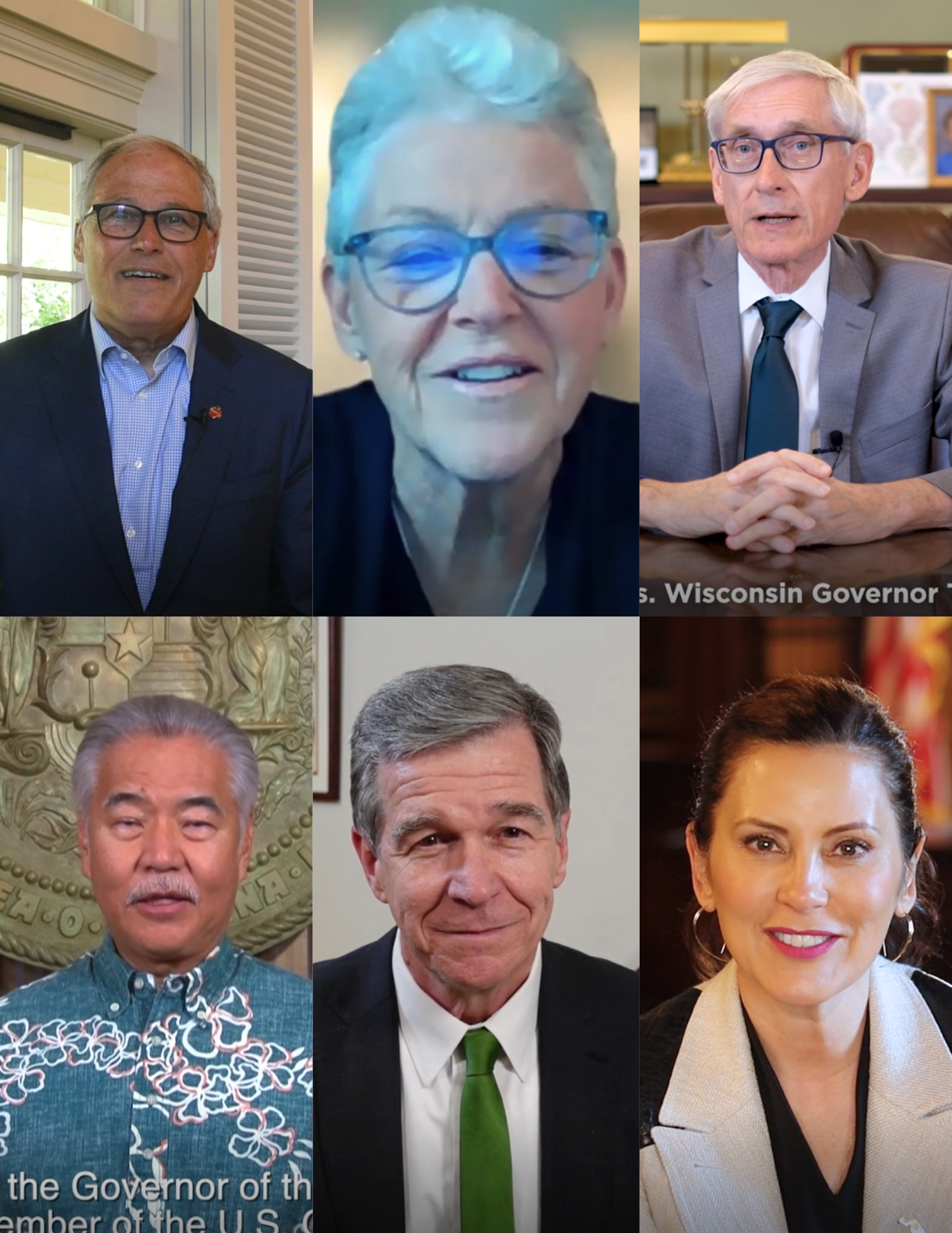Home / U.S. Climate Alliance Celebrates Five Years of State-Led Climate Collaboration, Innovation, and Action

WASHINGTON, D.C. – The U.S. Climate Alliance, a bipartisan coalition of U.S. governors representing 55% of the U.S. population and 60% of U.S. GDP, today marked its fifth anniversary with a series of video messages, featuring White House National Climate Advisor Gina McCarthy and several of leading Alliance governors, including: Oregon Governor Kate Brown, North Carolina Governor Roy Cooper, Wisconsin Governor Tony Evers, New York Governor Kathy Hochul, Hawaiʻi Governor David Ige, Washington Governor Jay Inslee, Connecticut Governor Ned Lamont, Colorado Governor Jared Polis, Nevada Governor Steve Sisolak, Michigan Governor Gretchen Whitmer, and Pennsylvania Governor Tom Wolf.
In their video messages, Alliance governors emphasized the power and impact of collective climate action in the five years since the Alliance was formed — highlighting how key state climate policies and initiatives are helping improve public health, create good jobs, cut consumer costs, and grow the economy. Governors also reaffirmed their commitment to continuing to expand the Alliance’s reach in the years ahead.
The Alliance was launched five years ago today by the governors of Washington, New York and California to help fill the void left by the previous administration’s decision to withdraw the U.S. from the Paris Agreement. Since its formation on June 1, 2017, it has grown to include two dozen U.S. governors from every region of the country. Governors in the Alliance are committed to achieving the Paris Agreement’s goal of keeping temperature increases below 1.5 degrees Celsius and have pledged to collectively reduce greenhouse gas emissions by at least 26-28% by 2025, at least 50-52% by 2030, and collectively achieve overall net-zero GHG emissions as soon as practicable, and no later than 2050.
Together, Alliance states have built a foundation of ambitious climate action, providing a durable roadmap for national policy makers and the Biden administration, while also forging a new state-federal partnership to help accelerate, and ultimately achieve, these shared climate goals. Recognizing that health, environmental, and economic crises disproportionately impact overburdened communities and can displace workers, the Alliance is also committed to centering equity, environmental justice and a just economic transition in its efforts to achieve these climate goals. Further, last year, Alliance states committed to more than 40 specific and new High-Impact Actions that will accelerate greenhouse gas emission reductions, complement and spur federal efforts, and drive the sort of tangible, impactful implementation and results needed to achieve U.S. climate targets.
Alliance states have shown that bold climate action goes hand-in-hand with economic growth. In fact, between 2005 to 2018, Alliance states collectively outpaced the rest of the country in both emissions reductions and economic output, achieving an estimated 14% decrease in emissions and a nearly 17% increase in per-capita economic output. These trends held in 2019 and the Alliance’s analysis showed that its member states created more than 133,000 new jobs in clean energy industries from 2016 to 2019 — surpassing the rest of the nation — as they pursued bold climate action.
Launched in 2017 by the governors of Washington, New York, and California to help fill the void left by the U.S. federal government’s withdrawal from the Paris Agreement, the Alliance has grown to include 24 governors from across the U.S. representing approximately 60 percent of the U.S. economy and 55 percent of the U.S. population. Governors in the Alliance have pledged to collectively reduce net greenhouse gas emissions by at least 26-28 percent by 2025, 50-52 percent by 2030, and 61-66 percent by 2035, all below 2005 levels, and collectively achieve overall net-zero greenhouse gas emissions as soon as practicable, and no later than 2050.
The Alliance’s states and territories continue to advance innovative and impactful climate solutions to grow the economy, create jobs, and protect public health, and have a long record of action and results. In fact, the latest data shows that as of 2023, the Alliance has reduced its collective net greenhouse gas emissions by 24 percent below 2005 levels, while increasing collective GDP by 34 percent, and is on track to meet its near-term climate goal of reducing collective greenhouse gas emissions 26 percent below 2005 levels by 2025.
###